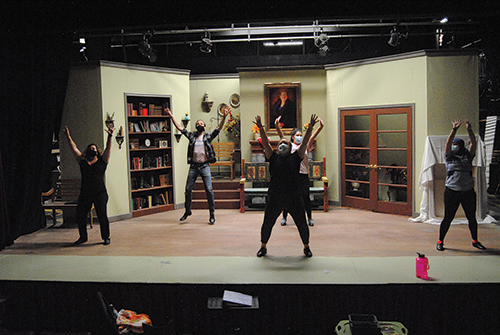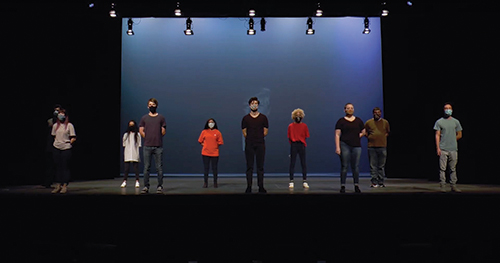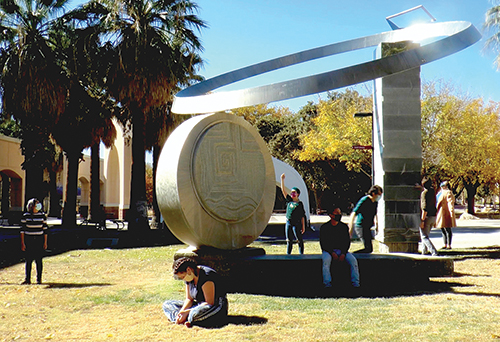Fans of NMSU’s theatre department relish the atmosphere of seeing student actors deliver performances in musicals and plays at the 450-seat Mark and Stephanie Medoff Theatre inside the ASNMSU Center for the Arts. COVID-19 changed all that.
Despite the pandemic, NMSU faculty, staff and students didn’t miss a beat, making sure audiences could attend performances in 2020 and 2021 from the comfort of their couches. They used their creativity to find new ways to teach, learn and share the art of performance.
“Theatre is meant to be live, with you in the room with the performers,” says Wil Kilroy, professor and theatre arts department head. “Now we are having our students working in front of a camera, allowing them to learn the skill of naturalistic acting, while still being heightened enough to be compelling to an audience.”
Three shows of the season were original, so students learned to be “creators as well as actors, a valuable skill to have when they enter the work environment and know they can create their own artistic work as well as be cast, design or crew for other shows,” says Kilroy.
The NMSU Theatre Arts/American Southwest Theatre Company kicked off its season with the pre-recorded production of “Letters to the Future.” Written by Kilroy, the play tackled news events from different viewpoints through student actors who were filmed reading the letters on stage. Theatre-goers viewed it online.
“The Land Where We Stand,” directed by Associate Professor Larissa Lury, was intended to be a site-specific production, with a socially-distanced audience traveling outdoors around the NMSU campus. The pandemic restrictions ended that idea. Instead, the team interviewed members of the NMSU community about their experiences on campus, and members of the larger community in the region about their own relationships to this area. They dug into the history of the university and began imagining the future. The show wove together fictional scenes with live music, movement pieces, documentary footage and interviews.
Another innovative performance was “Tracer,” directed by Assistant Professor Nichole Hamilton, which was a whodunnit livestreamed to an audience. The story follows a student who becomes ill at a Halloween party and a contact tracer is sent to investigate foul play.
“Tracer” featured five actors in a livestream performance alongside a pre-recorded supporting ensemble cast. The live actors were in separate rooms inside the ASNMSU Center for the Arts, using webinar technology for the clearest picture and to avoid lags from actors being in separate locations.
“It was a bit of a struggle at first to keep a high energy level through Zoom, but everyone was fully committed to working around the challenges,” says freshman theater student Elia Vasquez, who starred in “Tracer.”
Hamilton describes the process of preparing for this production as “its very own entity” but developed ways to help the cast and crew adjust.
“On stage, your senses are alive. But in Zoom I feel like we have to use our imagination much more,” Hamilton says.
The annual Broadway fundraiser show also pulled out all the stops as a virtual presentation. Although the 2020-2021 theatre season was a challenge, with vaccines becoming more readily available, there is hope for a return to the stage for live, in-person performances in the future.
“Our students are learning to be flexible and adapt and try new ideas so that their art can stay alive and be shared during these strange times,” Kilroy says.




Dove Hall, Room 212
305 N. Horseshoe Drive
Las Cruces, NM 88003